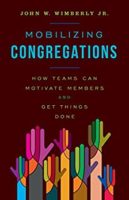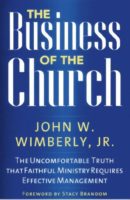Congregations start nonprofit organizations for many worthwhile purposes: to feed the hungry, care for victims of domestic violence, care for and educate children, build health care facilities in distant corners of the world, and so much more. Starting a nonprofit often is the most effective way to carry out parts of the congregation’s mission. However, the relationship between a congregation and the nonprofits it creates can become a tangled mess quite quickly if they lack a clear contractual agreement.
One of the most compelling reasons congregations start nonprofits is to make it easier to get financial support from foundations, government, and the public. Many foundations and government agencies may not make financial contributions to religious congregations. Some individuals worry that if they give directly to a congregation, their money might be used for sectarian religious purposes rather than the charitable activity they want to support.
I am familiar with one congregationally-based nonprofit that raises millions of dollars annually. If it were run as a strictly congregational program, it would probably raise tens of thousands annually. Congregations often can do more good through starting a nonprofit than they could do on their own.
Questions to ask
When a congregation starts a major mission effort, it should ask, “Should we do this as an in-house program of the church, or establish a nonprofit? If the benefits of starting a nonprofit outweigh the costs and potential problems, it should ask, “How does this relationship benefit the congregation’s mission? How does this relationship benefit the nonprofit’s mission? How should we structure the relationship to best accomplish both?”
To maximize the benefits to the congregation and the new nonprofit, several structural issues need to be resolved. One of the most important is this: What will be the relationship between the congregation’s governing board and the governing board of the nonprofit? If some or all the members of the nonprofit’s board are appointed by the congregation’s board, there are legal and tax implications to consider. There is also an ethical, transparency issue: Shouldn’t the community know that the nonprofit is being run by the congregation rather than a nonprofit that has both congregational and community representation on the board?
In my experience, to maximize community support for a nonprofit, the congregation needs to give up some control. The nonprofit can’t be a puppet of the congregation. It must have some true independence.
And therein lies the rub. The congregation should be represented on the nonprofit’s board, but over time that board may come to see its interests as different from—or even in conflict with—the congregation’s interests. Likewise, the congregation may sometimes disagree with the direction the nonprofit takes.
Getting it in writing
We can’t prevent the interests of the congregation and nonprofit from diverging. However, when it creates a nonprofit, leaders should clearly state their mutual responsibilities in a contract that is periodically reviewed and updated.
Crucially, the contract should address how conflicts will be resolved. A friend skilled in this area suggested the following two questions as needing attention: What “role conflicts” need to be managed—interlocking boards and staffs, tenant-landlord issues, etc.? What issues might need regular attention to maintain the health of the relationship? The contract should provide for the possibility that either party might decide to exit the relationship. If the nonprofit is truly independent, either party leaving is always a possibility.
I was recently asked what I would want to know about a nonprofit related to my congregation if I were on the congregation’s board. I said I would require the following:
- A copy of the nonprofit’s vision statement and any strategic plan it has for the future. If it doesn’t have a formal plan, I would ask for a projection of what it hopes to do during the next three years.
- A list of the members of the nonprofit’s governing board and how they are selected. A clear understanding of how many seats on the board will be selected by the congregation.
- A clear contract about how the nonprofit—or the congregation—would end their relationship, or the nonprofit’s presence in the church building.
- Copies of the nonprofit’s semiannual financial statements.
- A copy of its liability insurance policy, updated annually.
- Its current personnel policies and prompt notice of any changes.
- Its “safe space” policies.
I would want to know these things up front as the nonprofit is being created, and then periodically while the relationship continues.
Creating a nonprofit to do God’s work can be an effective way for a congregation to achieve parts of its mission. However, like many things in life, it can also lead to problems. Clear understandings about the purposes for which the nonprofit is established or housed in the congregation’s building, the relationship it will maintain with the congregation’s governing board, information about its policies and operations as they relate to the congregation’s fiduciary responsibilities, and a plan for how to renegotiate or terminate the relationship are all essential to consider before starting a nonprofit—or offering to share space in the congregation’s buildings.
John Wimberly is an experienced pastor and consultant. As a consultant, he has worked with congregations and judicatories on strategic planning, staff designs for the 21st century, and congregational growth as well as financial and administrative management. He has MBA, MDiv, and PhD (theology) degrees. His books focus on effective management and leadership. John believes congregations can have a bright future!




